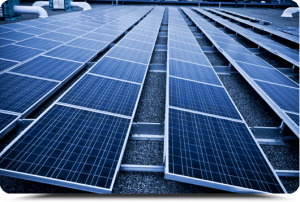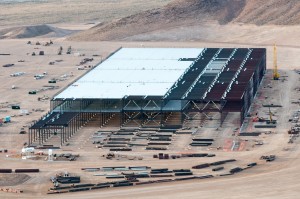Most electric utilities hate rooftop solar. When a customer installs solar on their roof, it means fewer sales (and therefore revenue) for the utility. It also means more unpredictable and dispersed sources of power from rooftops everywhere. As a result, many utilities across the country have been trying to kill state rooftop solar incentives for years.
 I’ve covered the battles in states like California, Hawaii and Nevada on this blog. The short of it is that California has slightly decreased their incentives for rooftop solar, in the face of declining prices and concern about utility costs; Hawaii has retrenched significantly but in turn created a new market for home batteries + solar; and Nevada brutally ended their incentives a year ago, leaving even existing solar customers without incentives that they had relied on when they bought their panels.
I’ve covered the battles in states like California, Hawaii and Nevada on this blog. The short of it is that California has slightly decreased their incentives for rooftop solar, in the face of declining prices and concern about utility costs; Hawaii has retrenched significantly but in turn created a new market for home batteries + solar; and Nevada brutally ended their incentives a year ago, leaving even existing solar customers without incentives that they had relied on when they bought their panels.
But the end of 2016 brought some significant updates for Nevada and now a new state, Arizona. First, as Greentech Media reported, Nevada regulators have restored the incentives for customers in the northern utility service territory (after having previously given into public pressure and restored the incentives for existing customers to “grandfather” them in).
But Arizona regulators have decided to jump off the rooftop solar cliff, killing existing incentives (which involve a full retail credit for every surplus kilowatt of electricity generated by the panels and not used on-site). Instead, solar customers in Arizona will be eligible for a vastly reduced and unpredictable “export rate” for any surplus electricity generated. As the Arizona Daily Star described:
The export rates will be determined in each utility rate case and will initially be based on a “resource comparison proxy” based on a weighted, five-year average cost of power from utility-scale solar farms.
The new export rates will vary by utility and be stepped down annually, in increments limited to 10 percent each year.
Solar industry advocates are already predicting that their industry will die in Arizona, as they correctly predicted would happen in Nevada after incentives were killed there, too.
Once those jobs disappear and Arizonans realize what they’ve lost, especially given that the state was otherwise one of the best-selling markets for solar with its abundant sunshine and high air conditioning bills, expect major political pushback. I wouldn’t be surprised if we see a Nevada-like reversal in the coming year or so.
In the meantime, the big winner could be battery companies like Tesla. Per Bloomberg, as the company “flipped the switch” yesterday on its gigafactory in Nevada, it will potentially have a new market to sell its product.
Why? Because if solar customers in Arizona aren’t going to get paid much for their surplus energy anymore, they’ll be interested in a cheap battery that can store that surplus and help them use all of it on-site. The battery therefore allows them to effectively recreate that full retail credit they used to get under the old system: any electricity they would have had to purchase from the utility when the panels weren’t producing or producing enough, they can now get from their battery.
So while states lurch around on their rooftop solar policies, the long-term trend seems clear: the incentives are decreasing, and cheaper batteries will be filling that void.
Leave a Reply
You must be logged in to post a comment.



